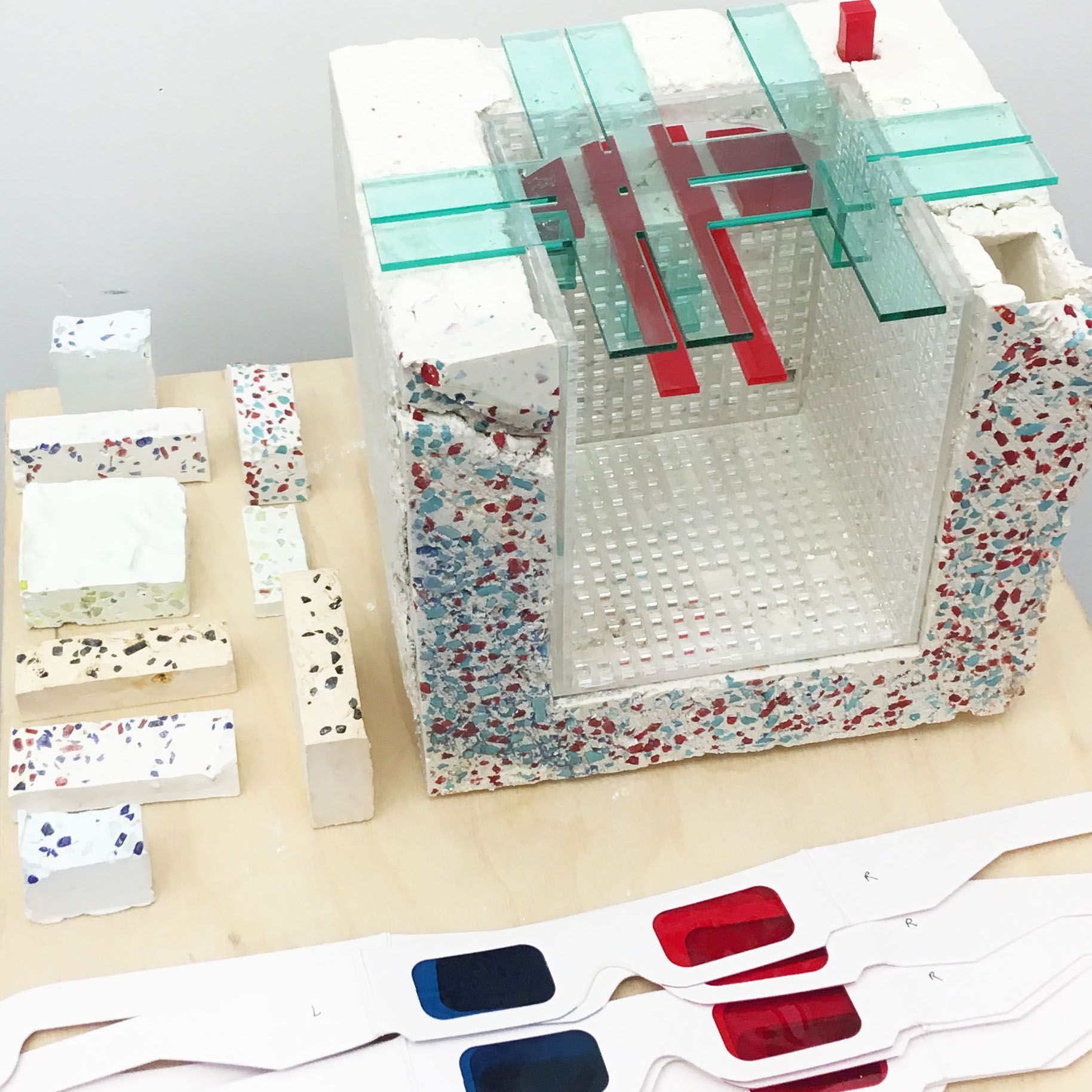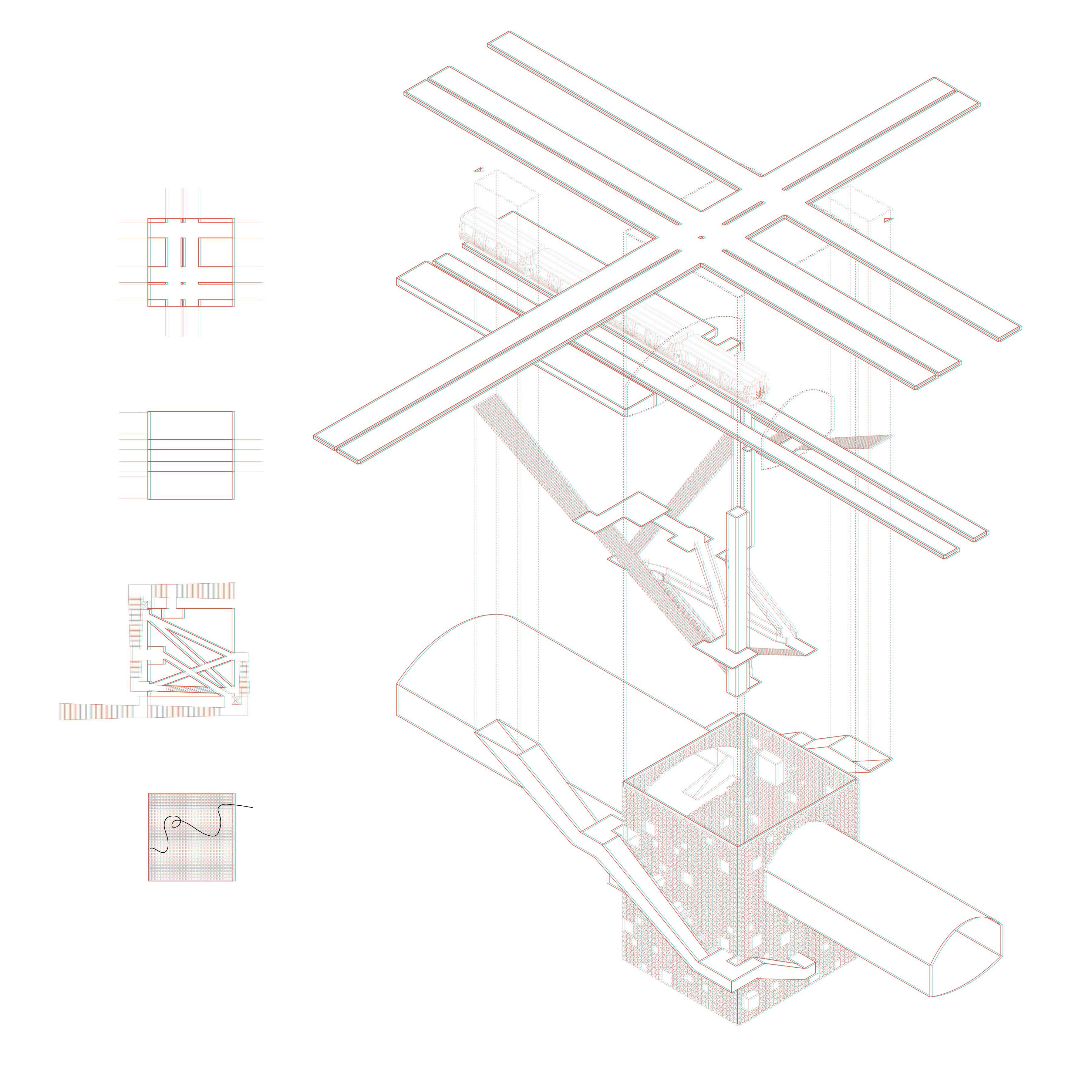Objects of Transit
︎ Tags: GSAPP, models, 2017
Columbia GSAPP Fall 2017
Critic: Tei Carpenter

Around 25,000 objects are lost every year on the MTA’s transportation network. As only 30% are being picked up again the design focuses on the exhibition and marketing of these objects. The lost objects are imagined as donations to the exhibit contributed by the people losing and the pick up rate turns into an anticipated loss rate in the scenario.
Arriving objects are brought to the curator/drone master who then ensures the distribution of the objects into the different sized cubic shelf spaces by drone. The objects are kept for 90-365 days depending on their value and are later sold or donated.
Beside the purpose of exhibiting objects, the space also serves as a display of different layers of transportations with pedestrian ramps, the subway and the street running through and above it while drones are circulating in every direction between these layers. Conceptually, it focuses on the circulation of pedestrians with its two circulation systems: the outside system consists of tapered stairs surrounded by poche with only a handful of exits into the exhibition space for the effect of compression and release and exhibiting the space itself through controlled views. The inside system acts as a promenade through the open space. As none of the two systems ever touch the ground or walls, the dimension of the space can never be fully understood.
Stereoscopic drawings were utilized for the representation of this project to communicate the different heights of the circulation layers. Besides, the grid and its orthogonality was particularly suitable for this kind of experimental presentation due to their familiarity to the human eye. The goal for the model was showing the contrast between the clean interior of the exhibition space and the rough ground conditions surrounding it.
Arriving objects are brought to the curator/drone master who then ensures the distribution of the objects into the different sized cubic shelf spaces by drone. The objects are kept for 90-365 days depending on their value and are later sold or donated.
Beside the purpose of exhibiting objects, the space also serves as a display of different layers of transportations with pedestrian ramps, the subway and the street running through and above it while drones are circulating in every direction between these layers. Conceptually, it focuses on the circulation of pedestrians with its two circulation systems: the outside system consists of tapered stairs surrounded by poche with only a handful of exits into the exhibition space for the effect of compression and release and exhibiting the space itself through controlled views. The inside system acts as a promenade through the open space. As none of the two systems ever touch the ground or walls, the dimension of the space can never be fully understood.
Stereoscopic drawings were utilized for the representation of this project to communicate the different heights of the circulation layers. Besides, the grid and its orthogonality was particularly suitable for this kind of experimental presentation due to their familiarity to the human eye. The goal for the model was showing the contrast between the clean interior of the exhibition space and the rough ground conditions surrounding it.


